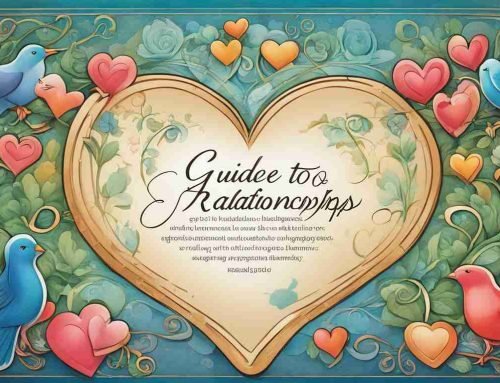The 5 Love Languages
Understanding and effectively communicating love is essential for a healthy and fulfilling connection. However, people often have different ways of expressing and receiving love. This is where the concept of the 5 Love Languages comes into play. Developed by Dr. Gary Chapman, this framework helps individuals understand and speak their partner’s primary love language, strengthening their bond and enhancing their emotional connection.
What are the 5 Love Languages?
The 5 Love Languages refer to five ways individuals prefer to receive love. These include:
1 Words of Affirmation: Some people feel most loved when they receive verbal or written compliments, praise, and encouragement.
Receiving words of affirmation is a powerful way to express love to someone whose primary love language is words of affirmation. This can be done by regularly complimenting your partner’s appearance, personality traits, or achievements. It is important to be genuine and specific in your compliments, as they hold more meaning. Leaving sweet and encouraging notes for your partner to find is also a great way to show your love. These simple gestures can profoundly impact your partner’s emotional well-being and strengthen your bond.
2 Quality Time: This love language emphasizes the importance of undivided attention and spending quality time together.
Quality time is all about being present and fully engaged with your partner. Plan regular date nights or activities you both enjoy to express love through quality time. This dedicated time allows you to deepen your connection and create lasting memories. Creating rituals that allow you to spend undivided attention together, such as cooking or taking walks, can strengthen your bond. Active listening and meaningful conversations during this time can foster a deeper emotional connection.
3 Receiving Gifts: For individuals who value this love language, meaningful gifts symbolize love and thoughtfulness.
Gift-giving is a tangible way to express love to someone whose primary love language is receiving gifts. It’s important to remember that it’s not always about the cost of the gift, but rather the sentiment behind it. Surprise your partner with thoughtful and meaningful presents that show you understand their interests and preferences. Remembering special occasions and milestones with heartfelt gifts can make your partner feel cherished and loved. Giving a gift communicates that you have taken the time and effort to think about it, which can deepen your emotional connection.
4 Acts of Service: People with this love language appreciate when their partner performs acts of kindness and service for them.
Acts of service involve doing things for your partner that make their life easier or more enjoyable. If your partner’s primary love language is acts of service, offering to help with household chores or tasks they usually take care of can express love. Taking the initiative to prepare a meal or do something special to lighten their workload shows that you care about their well-being. Being attentive to their needs and offering assistance whenever possible can make them feel loved and supported.
5 Physical Touch: This love language represents the importance of physical affection, such as holding hands, hugging, or cuddling.
Physical touch is a powerful way to express love to someone whose primary love language is physical touch. Engaging in non-sexual physical affection, such as holding hands, cuddling, or gentle touches, can make your partner feel valued and connected. Offering a comforting hug or embrace when your partner needs support can provide security and reassurance. Knowing your partner’s boundaries and preferences is essential, ensuring your touch is welcome and respectful.
Discovering Your Love Language
Understanding your love language, as well as your partner’s, is crucial for a successful relationship. You can determine your primary love language by reflecting on what makes you feel most loved and appreciated. Ask yourself questions like:
- Do I appreciate verbal affirmations or compliments?
- Do I prioritize spending quality time with my partner?
- Do I value receiving thoughtful gifts?
- Do acts of service make me feel loved and cared for?
- Does physical touch play a significant role in my emotional well-being?
By identifying which love language resonates with you the most, you can gain insight into your emotional needs and effectively communicate them to your partner.
Applying the 5 Love Languages
Once you and your partner have identified your primary love languages, applying this knowledge in your relationship is important. Here are some practical ways to express each of the love languages:
Words of Affirmation:
- Compliment your partner’s appearance, personality traits, or achievements regularly.
- Leave sweet and encouraging notes for your partner to find.
- Express gratitude for their efforts and express your love verbally.
Quality Time:
- Plan regular date nights or activities that you both enjoy.
- Create rituals allowing you to spend undivided attention together, such as cooking or walking.
- Engage in active listening and meaningful conversations to deepen your connection.
Receiving Gifts:
- Surprise your partner with thoughtful and meaningful presents that show you understand their interests and preferences.
- Remember special occasions and milestones with heartfelt gifts.
- It’s not always about the cost, but rather the sentiment behind the gift.
Acts of Service:
- Offer to help with household chores or tasks your partner usually takes care of.
- Prepare a meal or do something special to lighten their workload.
- Be attentive to their needs and offer assistance whenever possible.
Physical Touch:
- Engage in non-sexual physical affection, such as holding hands, cuddling, or gentle touches.
- Offer a comforting hug or embrace when your partner needs support.
- Be aware of their boundaries and preferences, ensuring your touch is welcome.
Cultivating a Stronger Connection
Understanding and speaking your partner’s love language can transform your relationship, bringing you closer and fostering a deeper emotional connection. However, remember that love languages can evolve, so it’s vital to maintain open and honest communication to ensure you both feel loved and understood.
By actively practicing the 5 Love Languages, you can create a foundation of love, trust, and security within your relationship. Remember, love is a journey, and learning to speak your partner’s love language is a powerful tool to keep your relationship thriving and flourishing.
**Note: This article is meant to provide general information and should not be considered a substitute for professional advice.
FAQ
Q: What are the 5 Love Languages?
A: The 5 Love Languages are Words of Affirmation, Quality Time, Receiving Gifts, Acts of Service, and Physical Touch.
Q: How can I express love through Words of Affirmation?
A: You can express love through Words of Affirmation by complimenting your partner, leaving sweet notes, and expressing gratitude and love verbally.
Q: What are some ways to show love through Acts of Service?
A: You can show love through Acts of Service by helping with household chores, preparing meals, and being attentive to your partner’s needs.
Q: How can I express love through Physical Touch?
A: You can express love through Physical Touch by engaging in non-sexual physical affection, such as holding hands, hugging, and offering comforting embraces.





